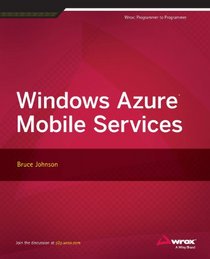Search -
Windows Azure Mobile Services
Windows Azure Mobile Services
Author:
Windows Azure Mobile Services (WAMS) are turnkey backend solutions for applications, mobile or otherwise, to utilize structured storage in the cloud. They include built-in authentication with Microsoft Account, Facebook, Twitter and Google, as well as push notification to the client app. This compact, to the point book gives readers just what th... more »
Author:
Windows Azure Mobile Services (WAMS) are turnkey backend solutions for applications, mobile or otherwise, to utilize structured storage in the cloud. They include built-in authentication with Microsoft Account, Facebook, Twitter and Google, as well as push notification to the client app. This compact, to the point book gives readers just what th... more »
ISBN-13: 9781118678695
ISBN-10: 1118678699
Publication Date: 6/17/2013
Pages: 142
Edition: 1
Rating: ?
ISBN-10: 1118678699
Publication Date: 6/17/2013
Pages: 142
Edition: 1
Rating: ?
0 stars, based on 0 rating
Genres:
- Computers & Technology >> Programming >> Microsoft Programming >> C & C++ Windows Programming
- Computers & Technology >> Microsoft >> Mobile & Tablet




